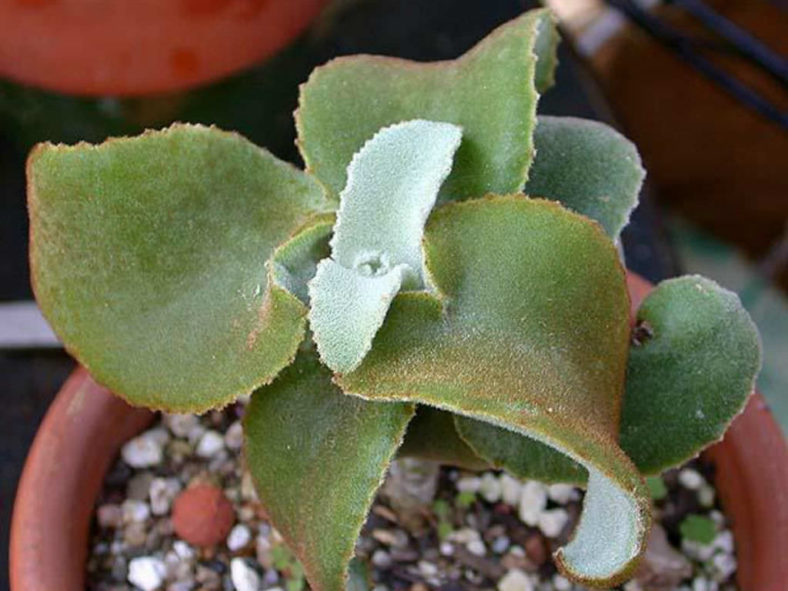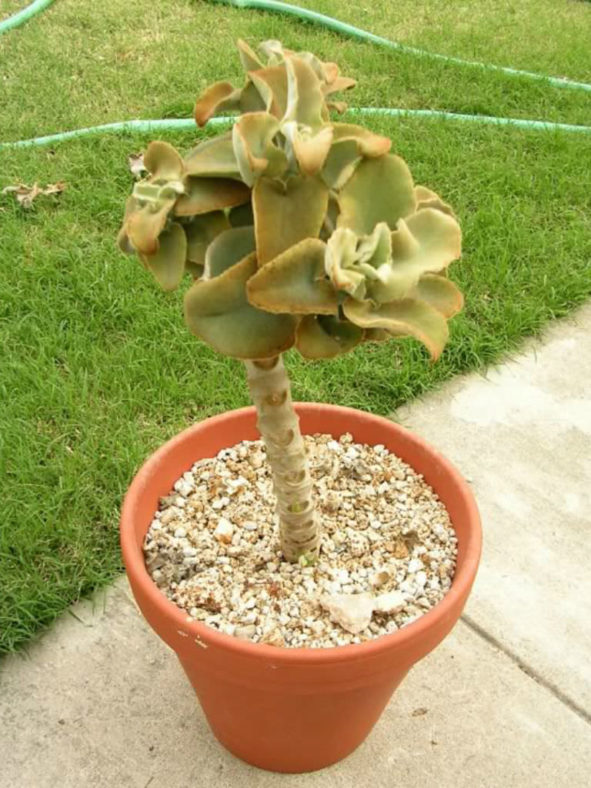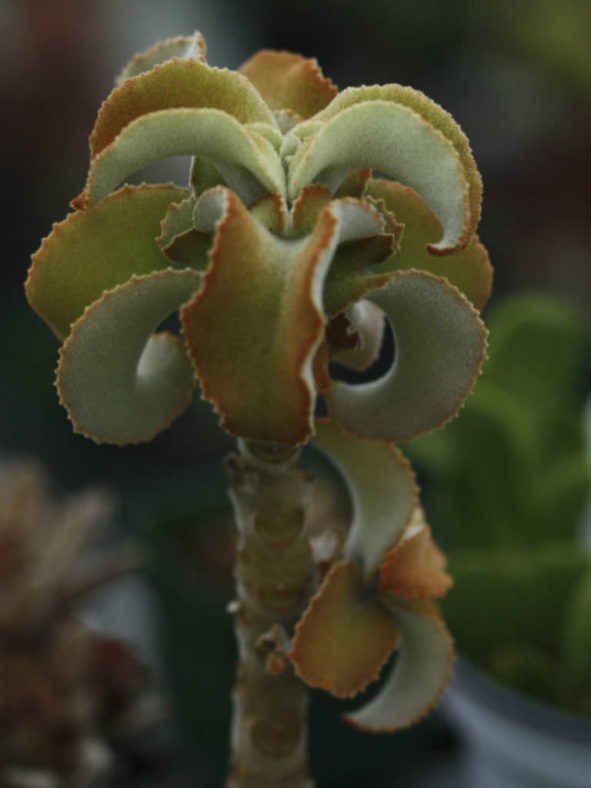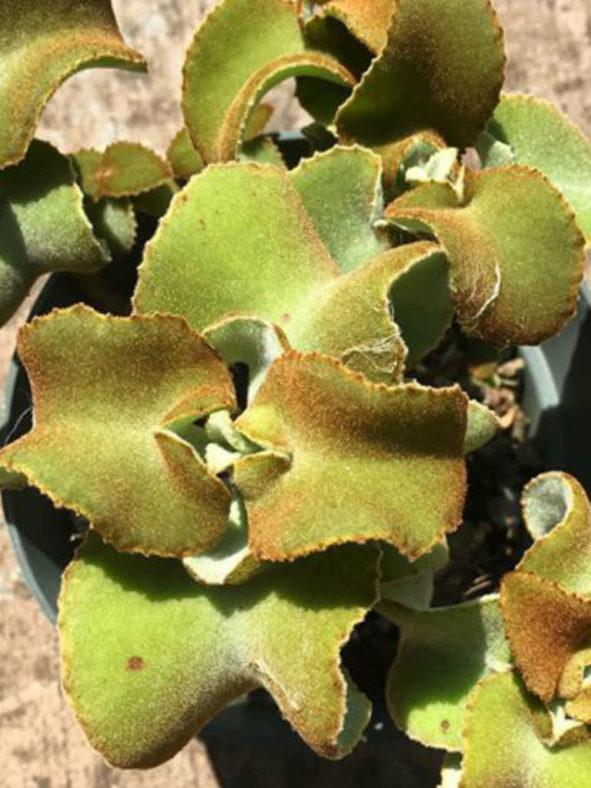Scientific Name
Kalanchoe beharensis 'Brown Dwarf'
Common Name(s)
Dwarf Velvet Elephant Ear
Synonym(s)
Kalanchoe beharensis 'Nana', Kalanchoe beharensis 'Ruptured Lollipop'
Scientific Classification
Family: Crassulaceae
Subfamily: Sedoideae
Tribe: Kalanchoeae
Genus: Kalanchoe
Origin
This succulent is a smaller-leaf cultivar of Kalanchoe beharensis.
Description
Kalanchoe beharensis 'Brown Dwarf', also known as Kalanchoe beharensis 'Nana', is a small, slow-growing succulent that forms rosettes of tortuous, golden-bronze or white, glabrous to pubescent leaves. It is considerably less robust and smaller-growing than the species. The rosettes can reach 6 inches (15 cm) in diameter.

How to Grow and Care for Kalanchoe beharensis 'Brown Dwarf'
Hardiness: USDA hardiness zones 9b to 11b: from 25°F (-3.9°C) to 50°F (10°C).
Kalanchoe care is minimal, but be cautious about light levels. Intense sunlight can burn the tips of the leaves. When growing Kalanchoes, place pots in partial sun to light shade areas.
The flowering varieties are highly rewarding, with colorful, long-lasting flowers. They prefer bright, sunny locations, especially in the growing season. Water moderately from fall through winter, when growth is most active. Reduce watering during the hottest summer months, when the plants are mostly dormant, and during winter, when growth slows significantly. Let the soil surface dry out between waterings. Watch the fleshy leaves for signs of water distress. An ordinary potting soil mix is fine. Feed biweekly during the growing season with a liquid fertilizer, or use slow-release pellets.
These small plants require repotting every few years. When repotting, take additional care in handling, as the leaves are somewhat brittle and can snap easily. Clay pots work exceptionally well for planting Kalanchoes. Ensure pots drain well and saucers empty easily.
Learn more at How to Grow and Care for Kalanchoe.
Links
- Back to genus Kalanchoe
- Succupedia: Browse succulents by Scientific Name, Common Name, Genus, Family, USDA Hardiness Zone, Origin, or cacti by Genus
Photo Gallery
Click on a photo to see a larger version.


